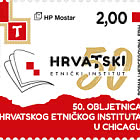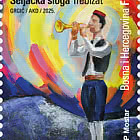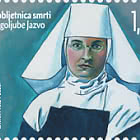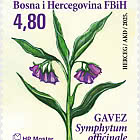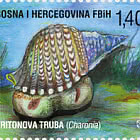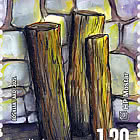2006Christmas and New Year - First Day Cover
2006 Christmas and New Year - First Day Cover for only GBP £1.36

The Christmas holiday, the birth of Jesus the child, the Christian world celebrates on 25 December. This holiday is the evangelical school of human quality and humanity. And Christmas customs are bringing back a series of human values directed to manifestation of universal benevolence from wishes and presentations to reconciliation of parties at odds and new verve in the family living. A period of preparations for Jesus Christ arrival and birth is called Advent or coming of Christ and consists of four weeks preceding directly the Christmas and symbolizing four millenniums, as much elapsed as of creation of the world until the arrival of Jesus. As of St. Catherine’s day, 25 November, the Christmas preparation is commencing which lasts exactly a month. Following Saint Catherine follows the days of Saint Barbara (4 December), Saint Nicholas (6 December) and Saint Lucy (13 December).A custom of sowing of Christmas wheat as symbol of life is kept to the present day on the Saint Barbara or Saint Lucy day but it is almost disappeared a custom of carrying out yule log and spreading out of straw under the holiday table on the eve of the Christmas. The Christmas Eve is named after a day on the eve of the Christmas, the name derives from a word “keeping vigil” since on the Christmas Eve is keeping vigil waiting the birth of Christ. Three large “yule logs”, symbols of the Holy Trinity are brought in a house and put in a fireplace at the Christmas Eve. A Christmas tree is particularly visible Christmas symbol under which are placed a crèche or any other Christmas sign. A crèche is directly pointing to the event celebrated – the nigh of the birth of Jesus and clearly symbolizing that he was born in a stable. The family celebration of the New Year is very similar to the Christmas one, thereby the Christmas is oriented toward a family and the New Year toward relatives and friends. The Christmas holidays terminate on 6 January when the Church celebrates the God’s appearance or Epiphany, the visit of the three wise men from the East to the infant Jesus bringing him presents: myrtle, gold and frankincense. A central set of Christmas customs is concluded by the Epiphany holiday.
Bosnia and Herzegovina - Mostar - Recommended stamp issues
WOPA+ recommended stamp issues
| Avatar - Fire and Ash |
| Issued: 03.12.2025 |
| ›New Zealand |
| 50th Anniversary of the Founding of the 24th November Bar Scout |
| Issued: 24.11.2025 |
| ›Montenegro |
| Krisjanis Valdemars |
| Issued: 02.12.2025 |
| ›Latvia |
| Sign Language - Good |
| Issued: 02.12.2025 |
| ›Bosnia and Herzegovina - Republic of Srpska |
| In Memory of the Fallen and Murdered on October 7, 2023 |
| Issued: 08.10.2025 |
| ›Israel |
| Annual Collection Folder (New York) |
| Issued: 05.12.2025 |
| ›United Nations |
| Year Set |
| Issued: 24.11.2025 |
| ›Isle of Man |
| Shipping in the 17th and 18th Centuries - Peat Shipping |
| Issued: 05.12.2025 |
| ›Netherlands |












